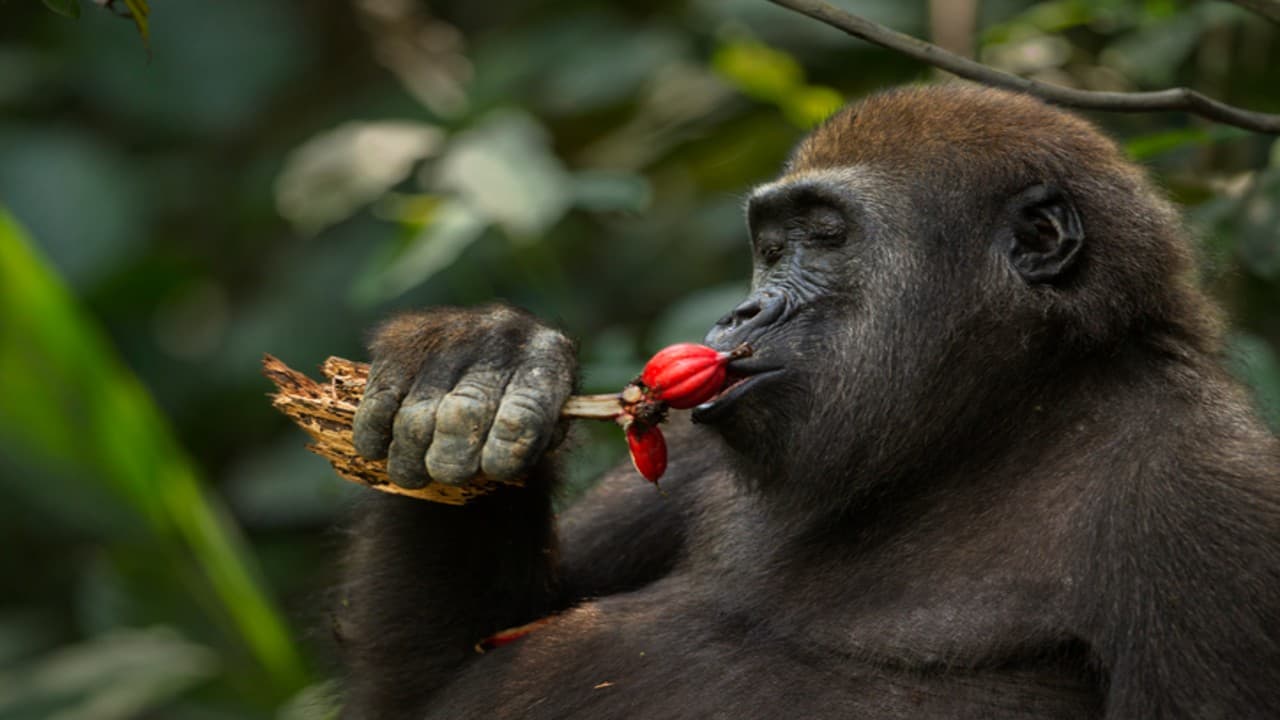Scientists have named a common ape behaviour ‘scrumping’, which is eating fermented fruit from the ground. This may explain how humans evolved to digest alcohol. It links modern alcohol tolerance to ancient habits in the wild.
Why can humans handle alcohol better than most animals? A new study A study published in Daily Science and sourced from Dartmouth College says the answer might lie in what some wild apes eat overripe, fermented fruit from the forest floor. This behaviour, now called ‘scrumping’, could explain how our ancestors developed the ability to digest alcohol long before they learned to make it.
What Is Scrumping?
Scrumping is a term coined by scientists to describe apes eating fermented fruit that has fallen to the ground. The fruit becomes slightly alcoholic after lying on the forest floor. Apes, especially African ones like chimpanzees and gorillas, are often seen eating this kind of fruit.
The word comes from the old German word ‘schrimpen’, meaning shriveled or shrunken. In modern England, scrumpy is also a strong apple cider made from overripe fruit. The researchers say having a proper word like ‘scrumping’ helps people take the behaviour more seriously in science.
Scrumping and Human Evolution
In 2015, a gene study showed that a small change in the DNA of our common ancestor with African apes allowed them to process alcohol 40 times better than other animals. But without a word for the behaviour, scientists had not studied it closely.
The new study, led by Dartmouth College and the University of St Andrews, found that African apes eat a lot of fruit from the ground, while Asian apes like orangutans rarely do. This supports the idea that our ability to digest alcohol came from these ground-level eating habits.
Safety May Have Played a Role
Climbing trees to find fruit is risky for big animals like gorillas and chimps. A study in 2023 showed that falling from trees is extremely dangerous and may have influenced how early humans evolved.
Eating fruit from the ground meant less risk of falling. If that fruit was fermented, apes needed to process small amounts of alcohol. Over time, their bodies, and ours, may have adapted to handle it.
How Much Alcohol Do Apes Really ‘Eat’?
Chimpanzees can eat about 10 pounds (around 4.5 kg) of fruit every day. If some of that fruit is fermented, they are likely getting low but regular amounts of alcohol.
Researchers are now working on the next step: measuring how much alcohol is in fruits on the ground versus in the trees. This could give a better idea of how much alcohol wild apes consume daily.
Could Apes’ Drinking Be Social Too?
Apes often eat in groups. If they are eating fermented fruit together, this could be a kind of early social drinking. Catherine Hobaiter, a co-author of the study, says this might be the start of a behaviour we now see in humans, drinking together as part of social bonding.
Whether it’s a group of friends having a drink or apes eating boozy fruit together, the act of “shared drinking” might go back much further than we thought.
Scrumping: A Word That Could Change Science
Words help us understand the world better. Just like ‘meme’ or ‘symbiosis’ became part of everyday science, ‘scrumping’ could help scientists study how alcohol tolerance started in our ancestors.
Nathaniel Dominy, the lead author, says if the word is useful, it will stick. That’s how science and language evolve.
The idea that long before humans learned how to make alcohol, our ancestors were probably eating it by accident through scrumping is simply amusing. This small behaviour may have had a big effect on our evolution. By giving it a name and studying it closely, scientists are now one step closer to understanding how we became the only species to brew, bottle, and toast.
